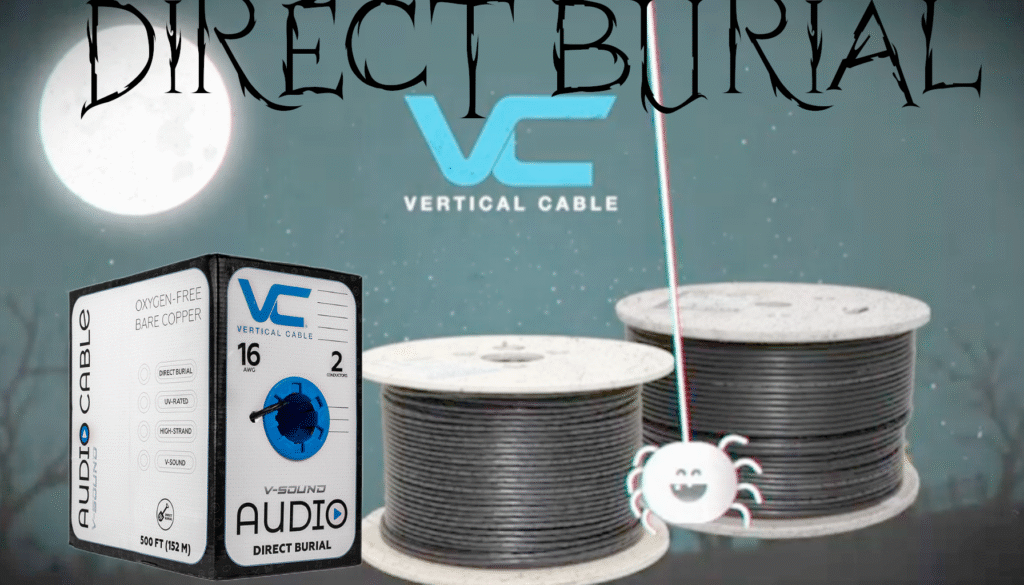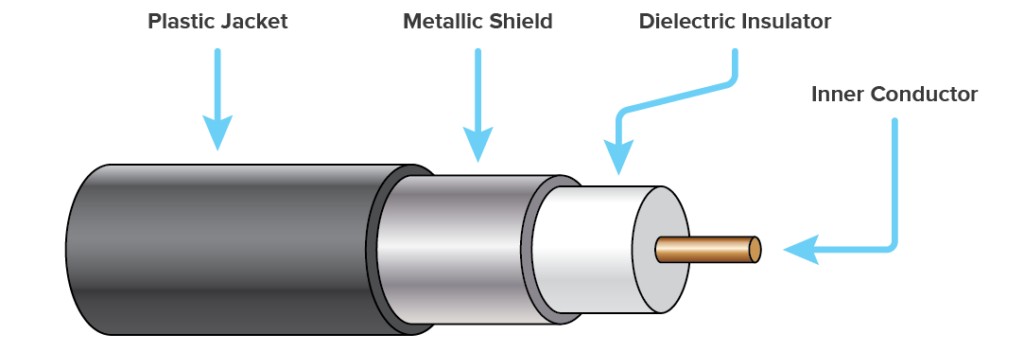
Coaxial cables are foundational in today’s digital communication and surveillance networks. Whether you’re wiring a home theater, setting up a commercial CCTV system, or building a broadband infrastructure, choosing the right coaxial cable ensures performance, reliability, and signal clarity.
At Vertical Cable, we offer an extensive range of coaxial solutions to meet every need—from RG59 for analog CCTV to quad-shielded RG6 for satellite and high-frequency transmissions.
What is a Coaxial Cable?
A coaxial cable is a type of electrical cable that transmits radio frequency (RF) signals through a central conductor, surrounded by insulation, shielding, and an outer protective jacket. Its layered structure minimizes signal interference and maintains signal integrity over distances.
Types of Coaxial Cables
Different applications require specific types of coaxial cables. Here are some of the primary categories:
| RG6 Coaxial Cable | RG59 Coaxial Cable | RG11 Coaxial Cable |
|---|---|---|
| • Ideal for HDTV, satellite TV, and broadband internet • Better shielding and lower attenuation than RG59 | • Best for analog video, short CCTV runs, and low-frequency signals • Flexible and easy to install indoors | • Used for long-distance installations due to low signal loss • Thicker and less flexible—ideal for outdoor or backbone runs |
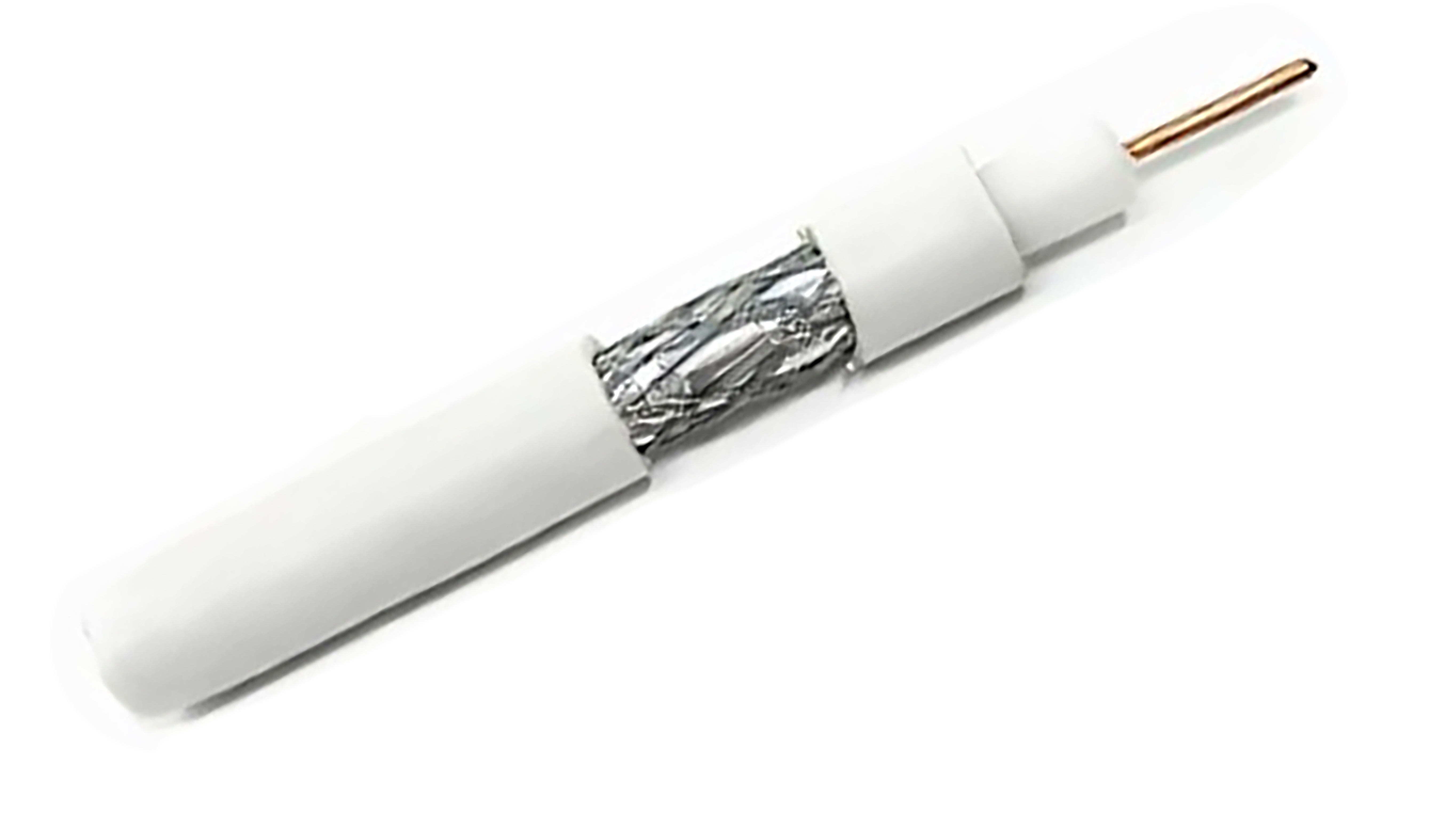  |  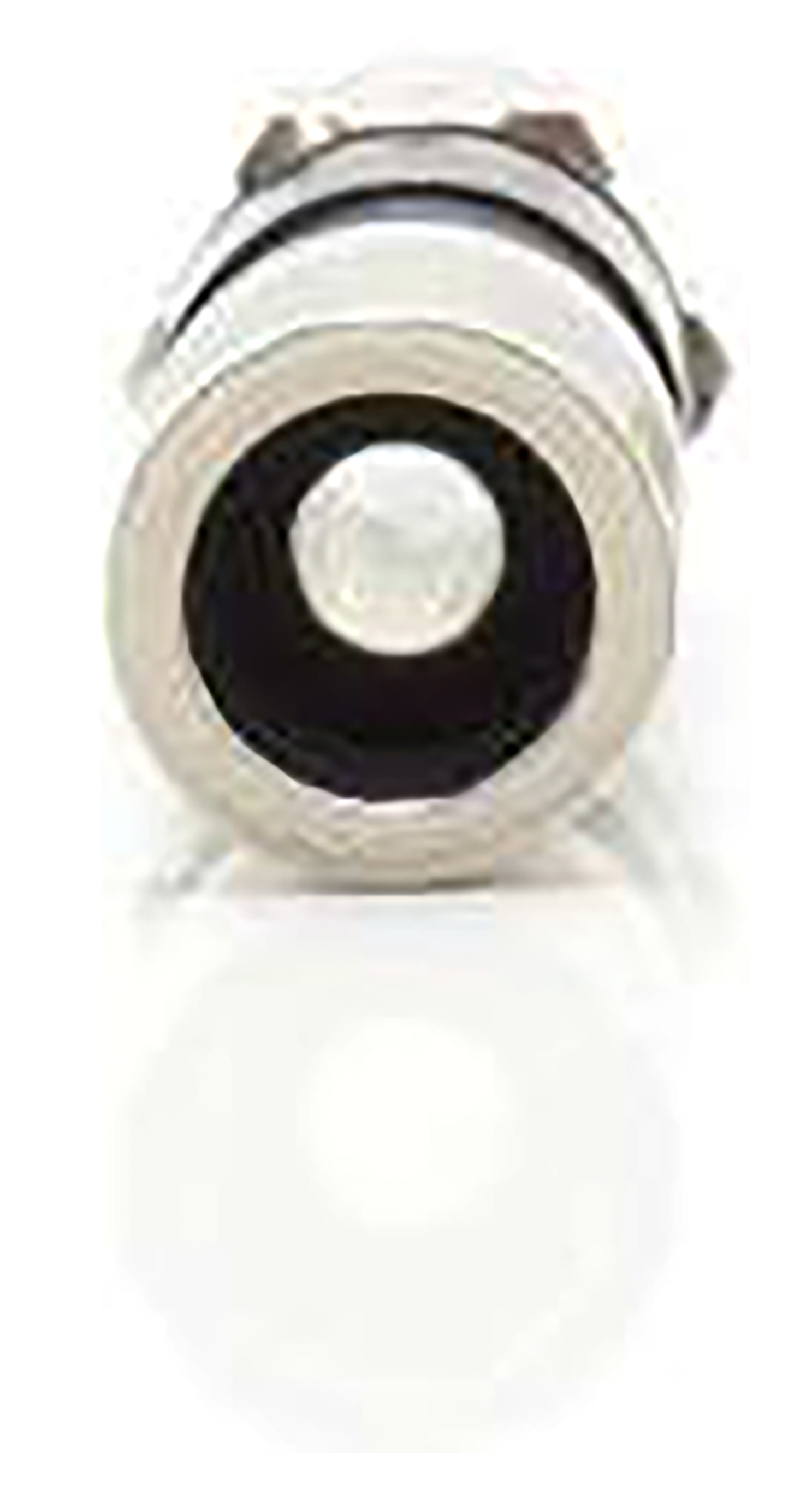 |  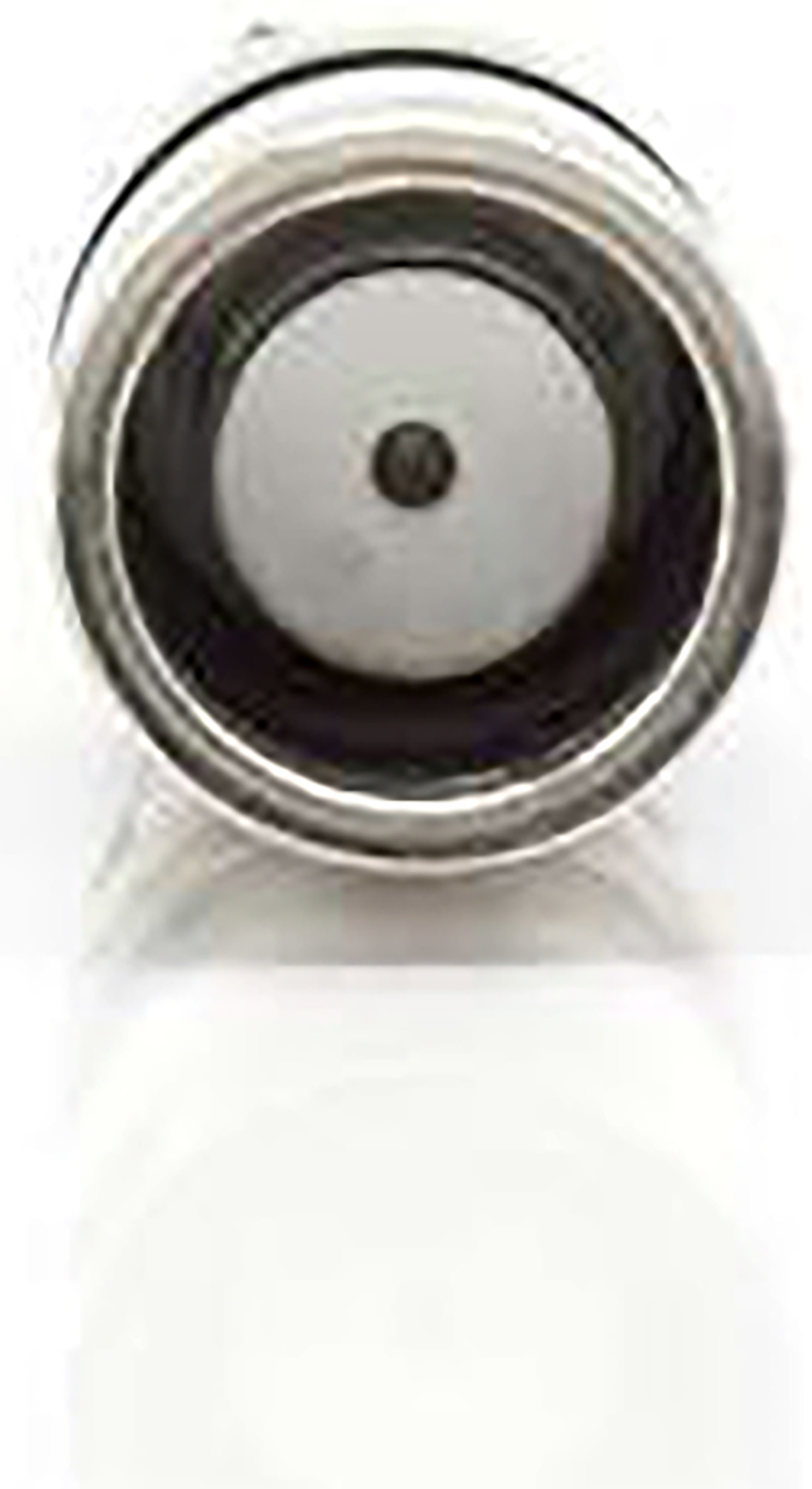 |
Coaxial Cables Shielding Types
Shielding is critical in minimizing electromagnetic interference (EMI) in coax cables. At Vertical Cable, we offer:
Standard Shielding
- Includes one foil + one braid layer
- Suitable for residential or low-EMI environments

Quad Shielding
- Includes two foil + two braid layers
- Ideal for high-interference areas, longer runs, and commercial installs

Copper Clad Steel vs. Copper Clad Aluminum: Which Conductor is Better?
When selecting a coaxial cable, one crucial factor to consider is the type of conductor inside. The reason being that the material inside a coaxial cable greatly impacts its performance. The two most common types you’ll find in coax cables that we offer are:
- Copper-Clad Steel (CCS)
- Copper-Clad Aluminum (CCA)
Understanding how they compare can help you choose the right cable for your application.
Copper-Clad Steel (CCS)
CCS features a steel core coated with copper. While the steel adds strength, it has higher resistance than solid copper and is typically used in:
- Installations where physical cable strength is a priority
- TV and satellite installations where the signal is strong
Pros
Cons
- Strong and durable for pulling through walls or conduit
- Lower cost than solid copper
- Higher attenuation (signal loss) over long distances
Copper-Clad Aluminum (CCA)
CCA cables have an aluminum core with a copper coating. They’re typically used in budget installations, but come with trade-offs:
- For short cable runs in low-risk environments (e.g., small retail shops or homes) where power over coax (PoC) isn’t required.
- Events, exhibits, or short-term surveillance setups that don’t need long-term reliability.
- Where the cable carries only video/data, not power—such as some TV, FM radio, or low-frequency signals.
- Used in economical home theater or analog signal connections where long runs and signal quality aren’t critical.
Pros
Cons
- Lightweight and inexpensive
- Adequate for short-run, low-frequency applications
- Good for Signal-Only Transmission
- Not recommended for outdoor or long-distance use
- Poor power conductivity
Residential & Industrial Applications
Coaxial cables are integral to numerous applications across various sectors:
Residential
-
-
- Television Services: Coaxial cables deliver cable television (CATV) signals to homes, ensuring high-quality audio and video output.
- Internet Connectivity: They connect modems to service providers, facilitating broadband internet access.
- Home Surveillance Systems: Coaxial cables transmit video signals from security cameras to recording devices or monitors.
-
Commercial/Industrial
-
-
- Broadcasting: Coaxial cables are used in transmitting radio and television signals from studios to transmitters.
- Telecommunications: They play a role in connecting various communication devices, ensuring reliable data transmission.
- Surveillance: In large-scale security setups, coaxial cables connect numerous cameras to central monitoring stations
-
Vertical Cable’s Coaxial Cable Selection
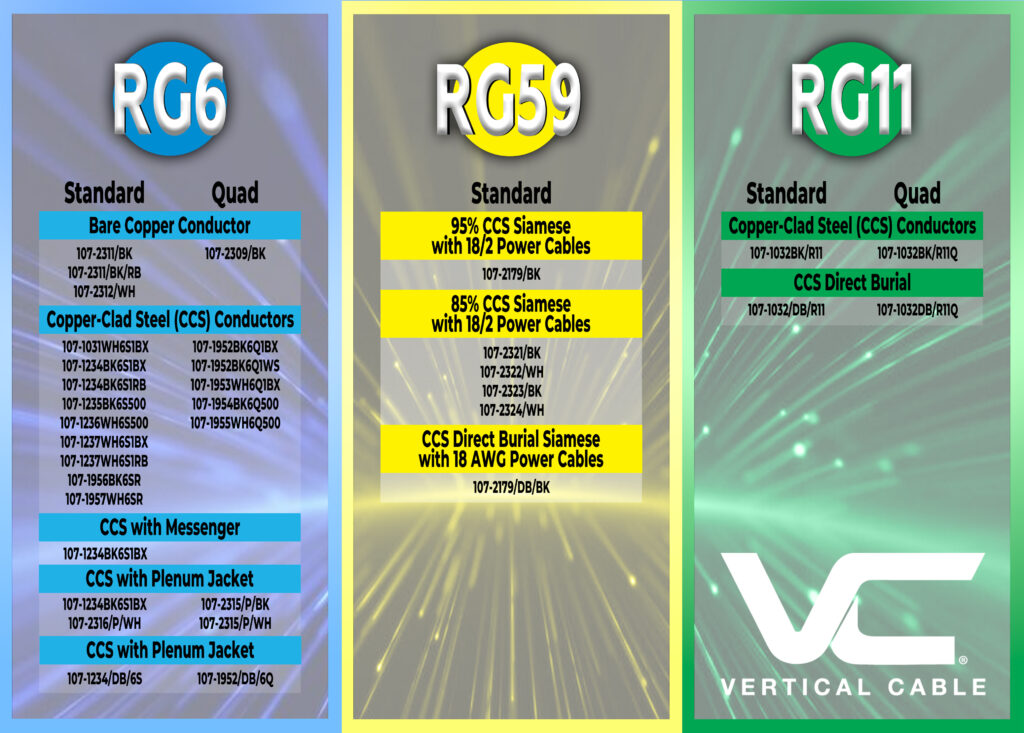
Connectivity Solutions for Coaxial Cables
Ensuring optimal performance of coaxial cables requires appropriate connectors and accessories. At Vertical Cable, we provide a comprehensive range of connectivity solutions, including:
- Coax Connectors: Essential for terminating cables and establishing secure connections.
- Keystone Inserts and Connectors: Facilitate easy integration into wall plates and patch panels.
- Tools: Specialized equipment designed for precise cutting, stripping, and crimping of coaxial cables.
Selecting the Right Coaxial Cable
When choosing a coaxial cable, consider the following factors:
- Application: Determine whether the installation is for residential or industrial use. (place image here)
- Distance: Longer distances may require cables like RG11, which have lower signal loss.
- Frequency Requirements: Ensure the cable supports the necessary frequency range for your application.
- Shielding: In environments with high EMI, opt for cables with enhanced shielding to maintain signal integrity.
- Packaging: Available in convenient packaging options including:
- Pull Boxes – Tangle-free dispensing for fast installations
- Reel-in-Boxes – Controlled rollout for larger job sites
By understanding the nuances of coaxial cables and their connectivity solutions, you can make informed decisions that ensure reliable and high-quality signal transmission for your specific needs.
For a detailed overview of our coaxial cable offerings, please visit our Coaxial Cable Category Page.
